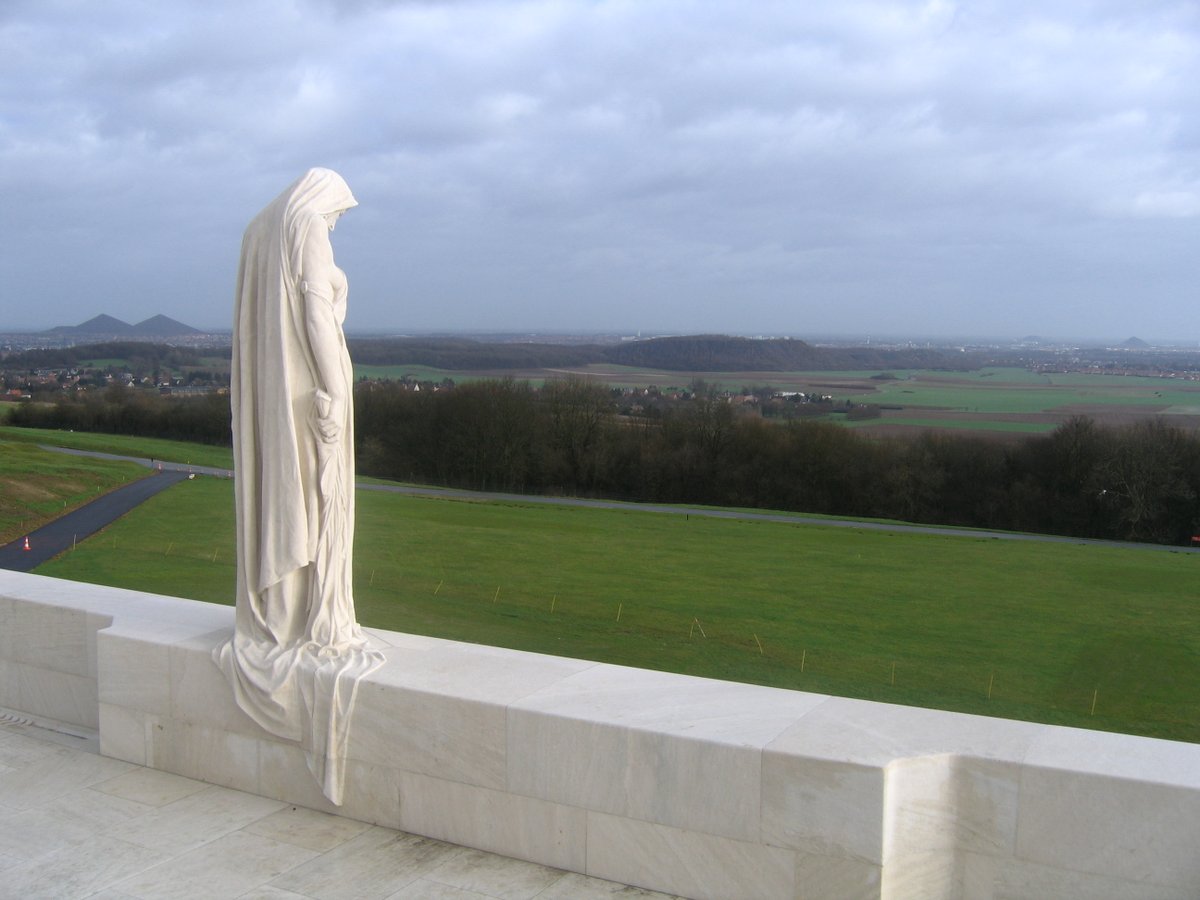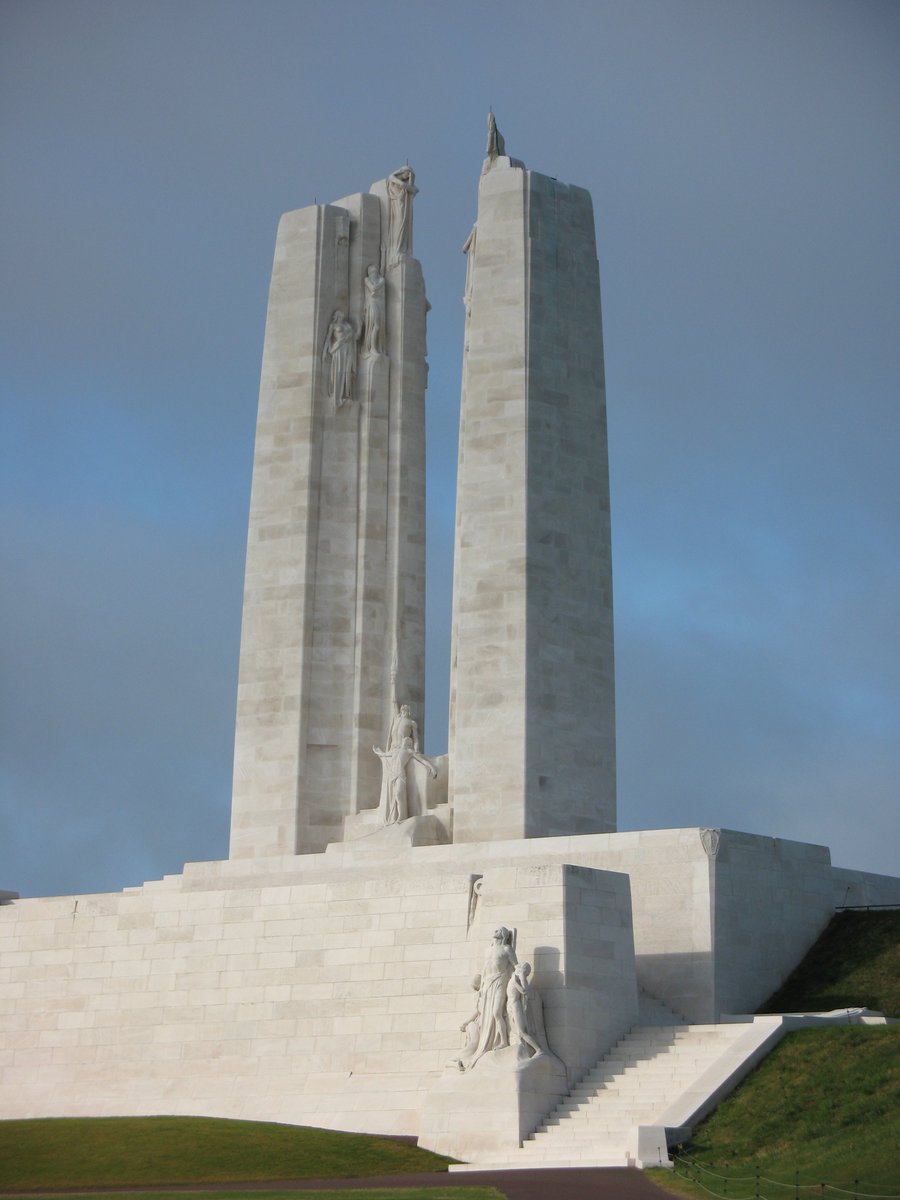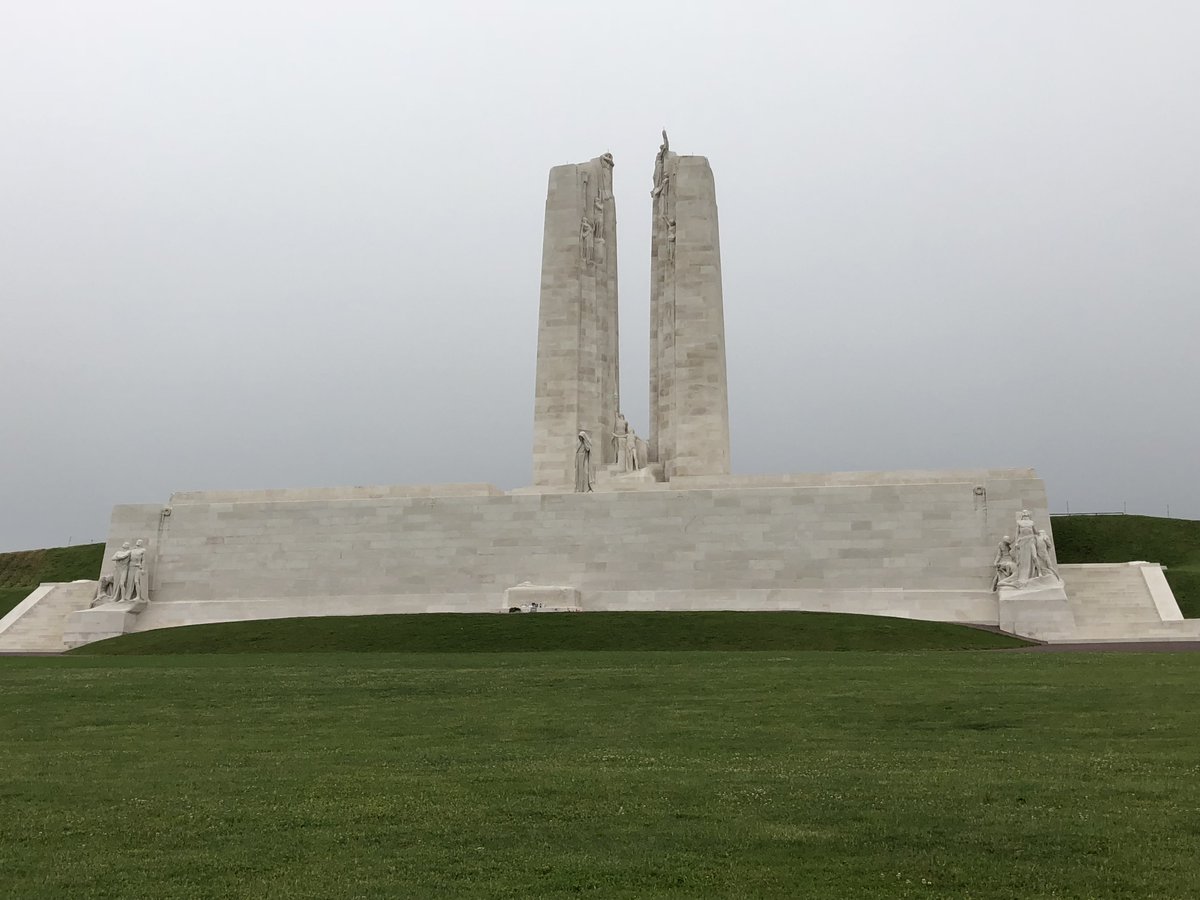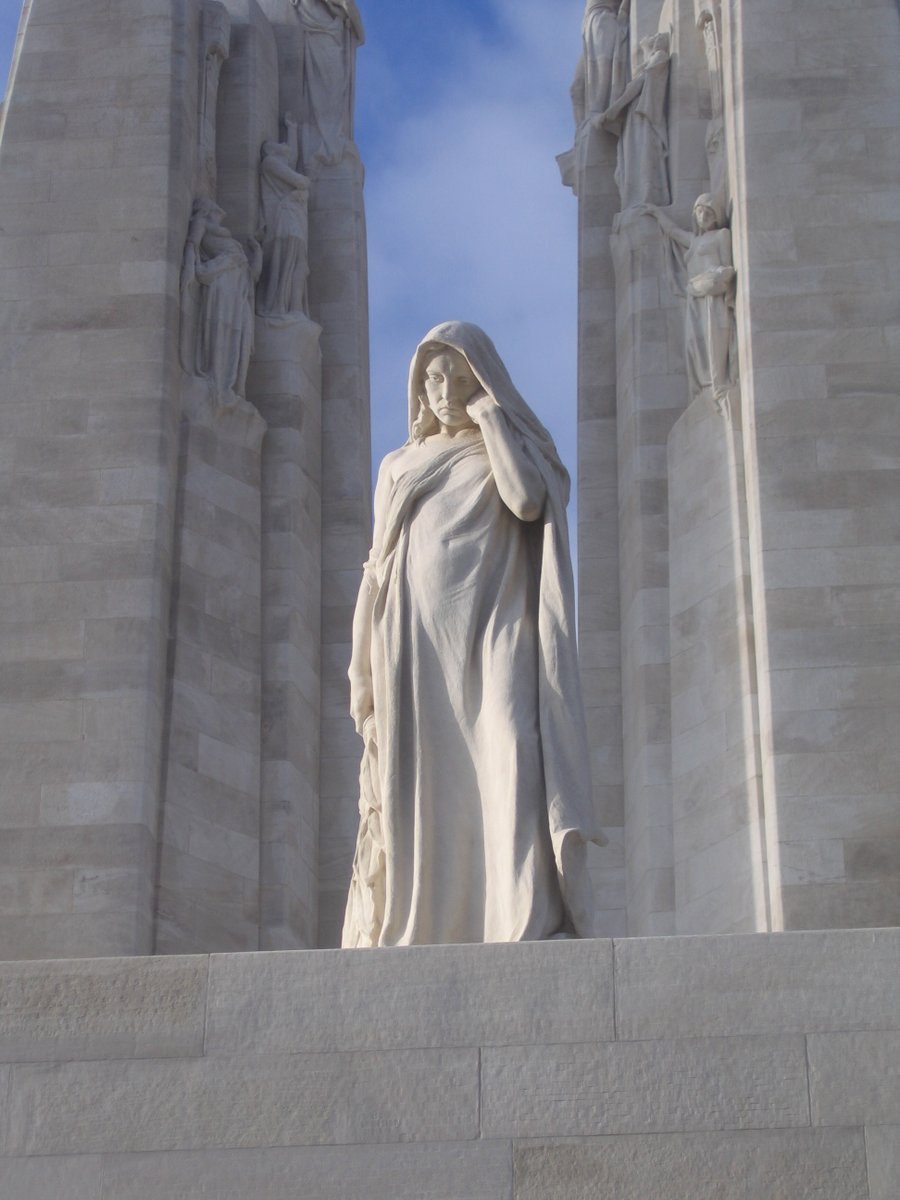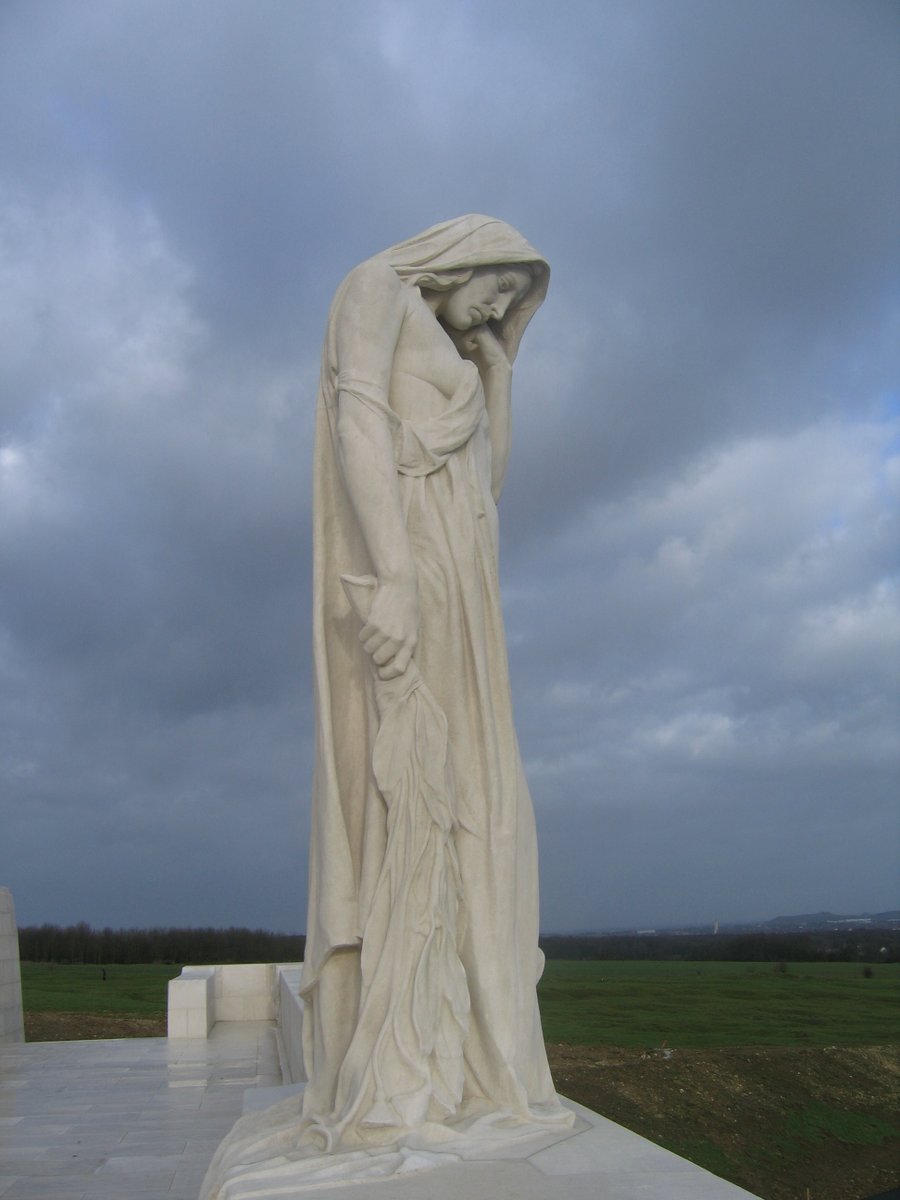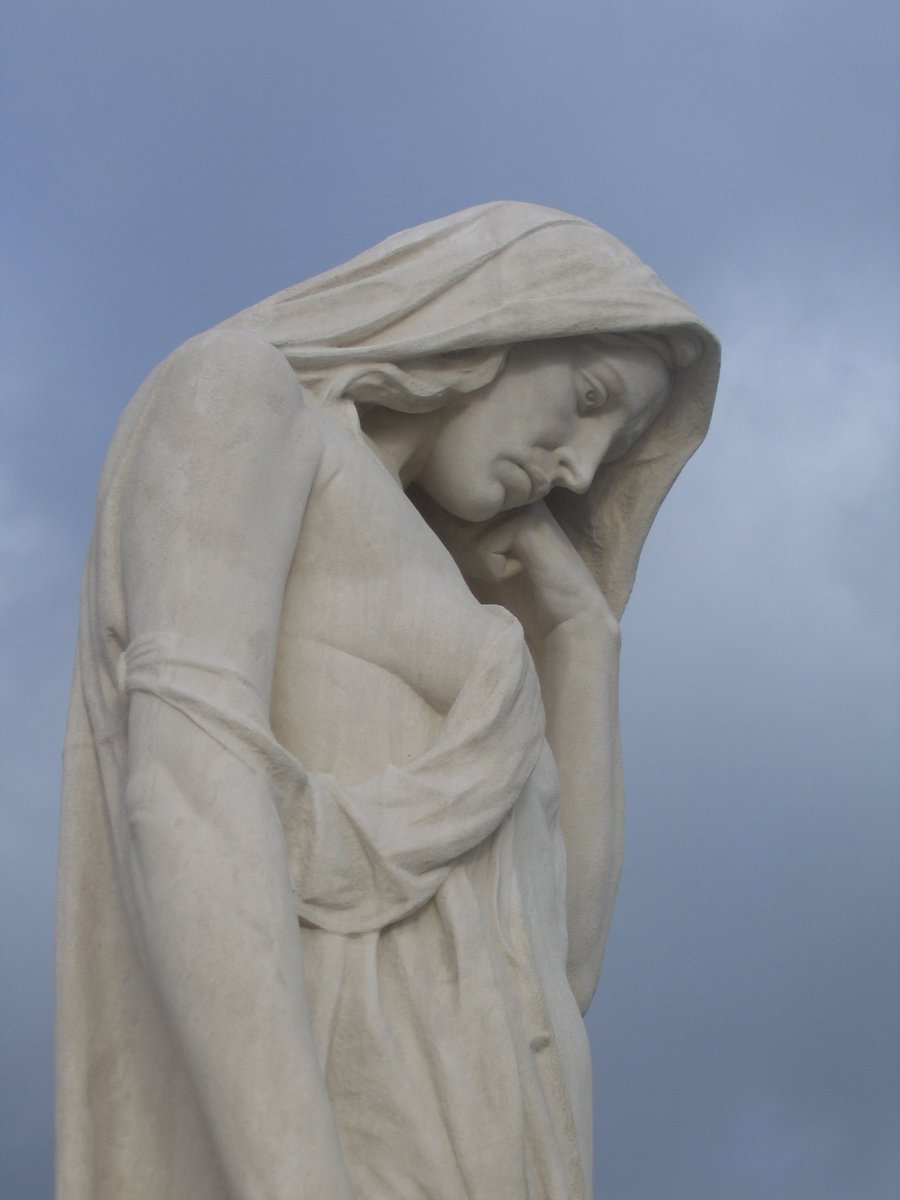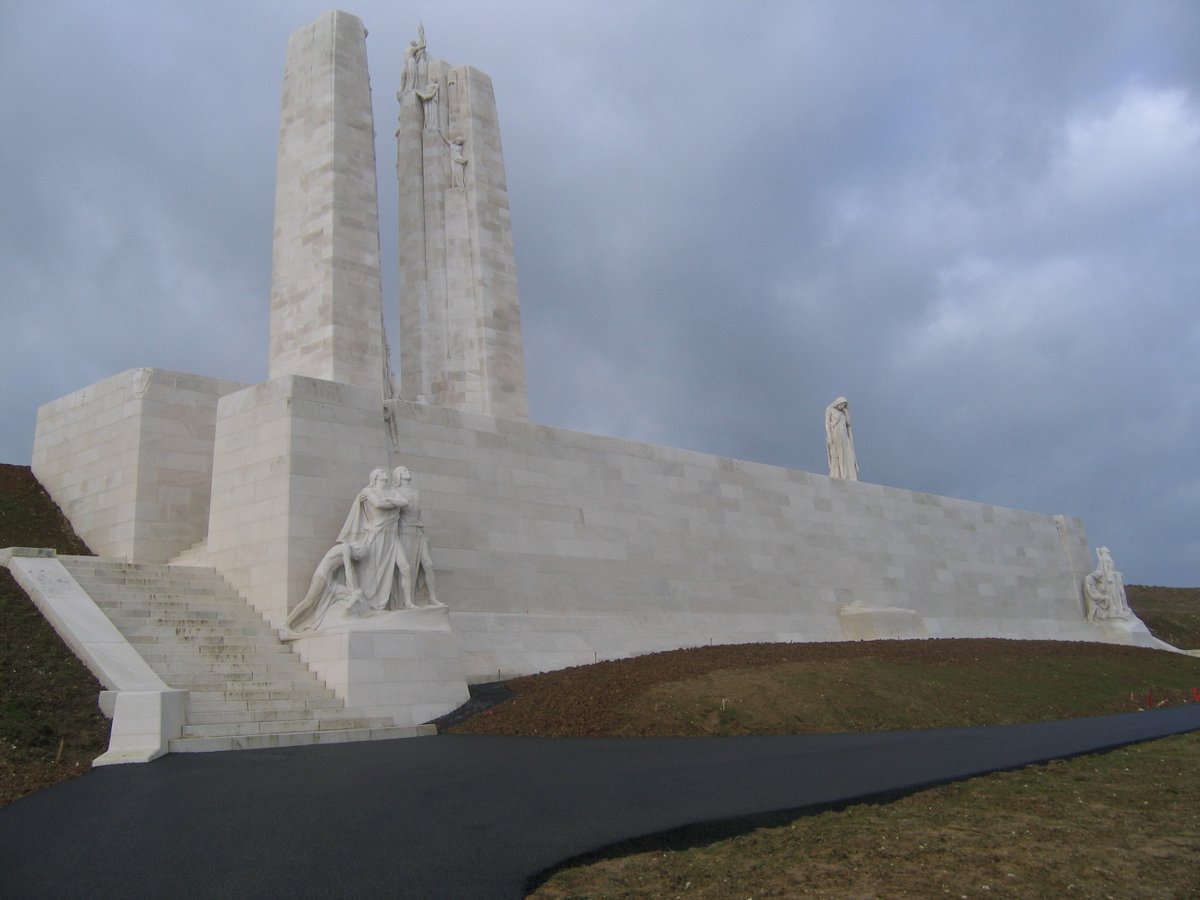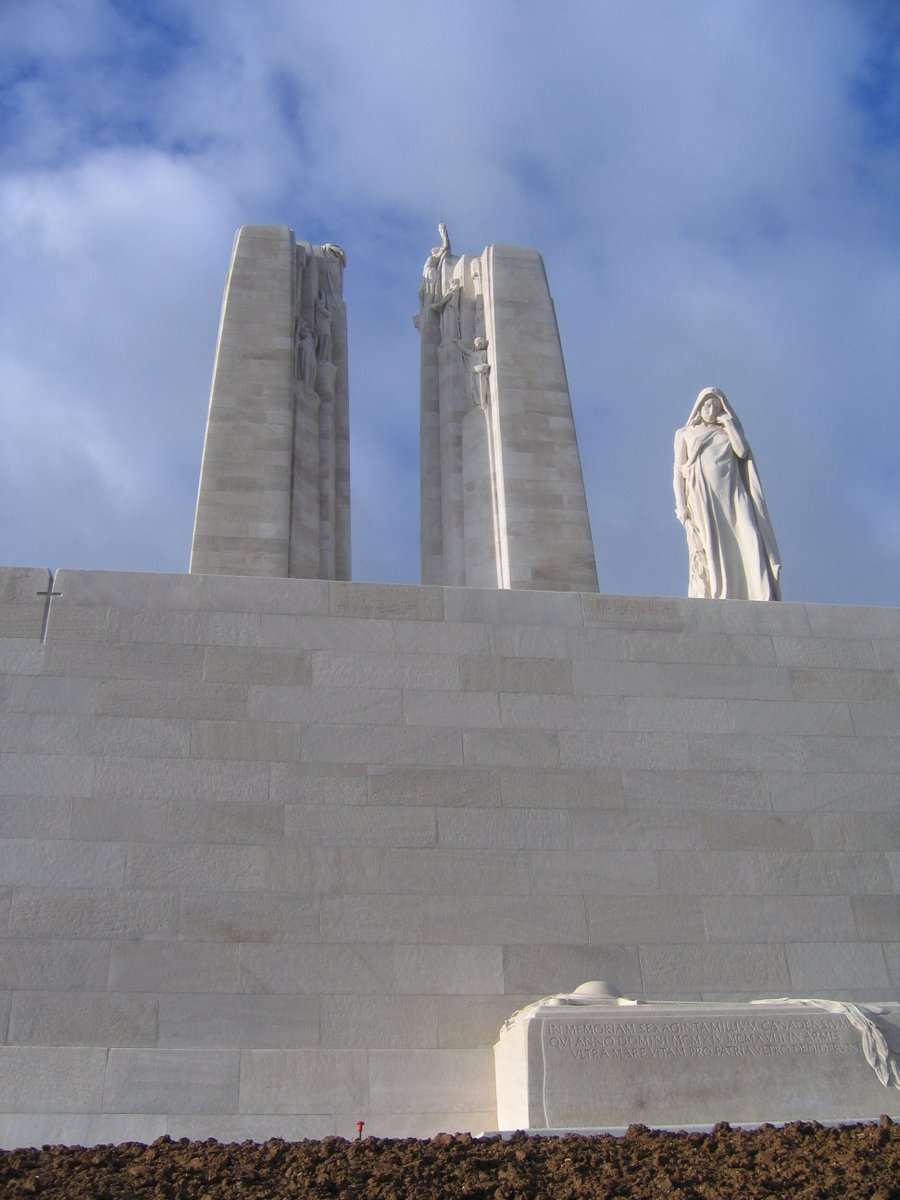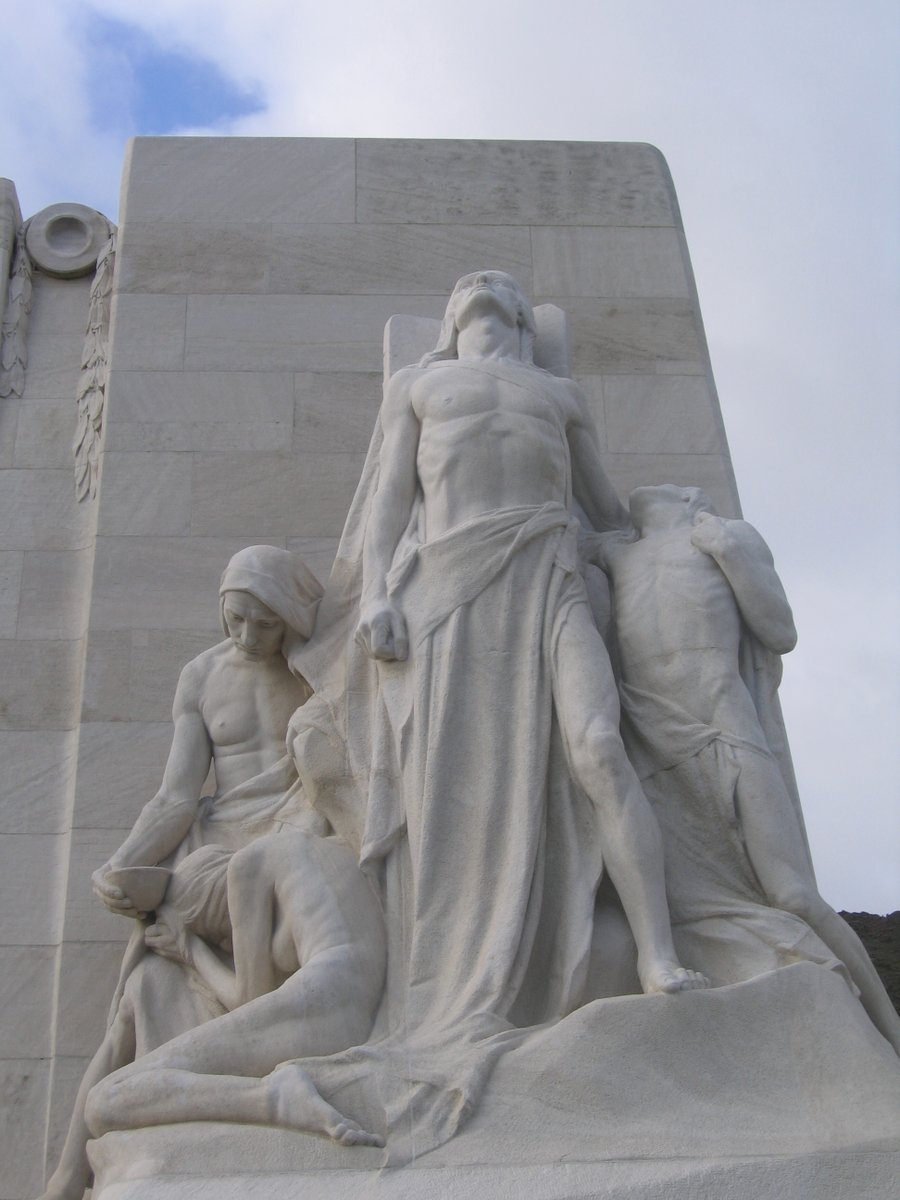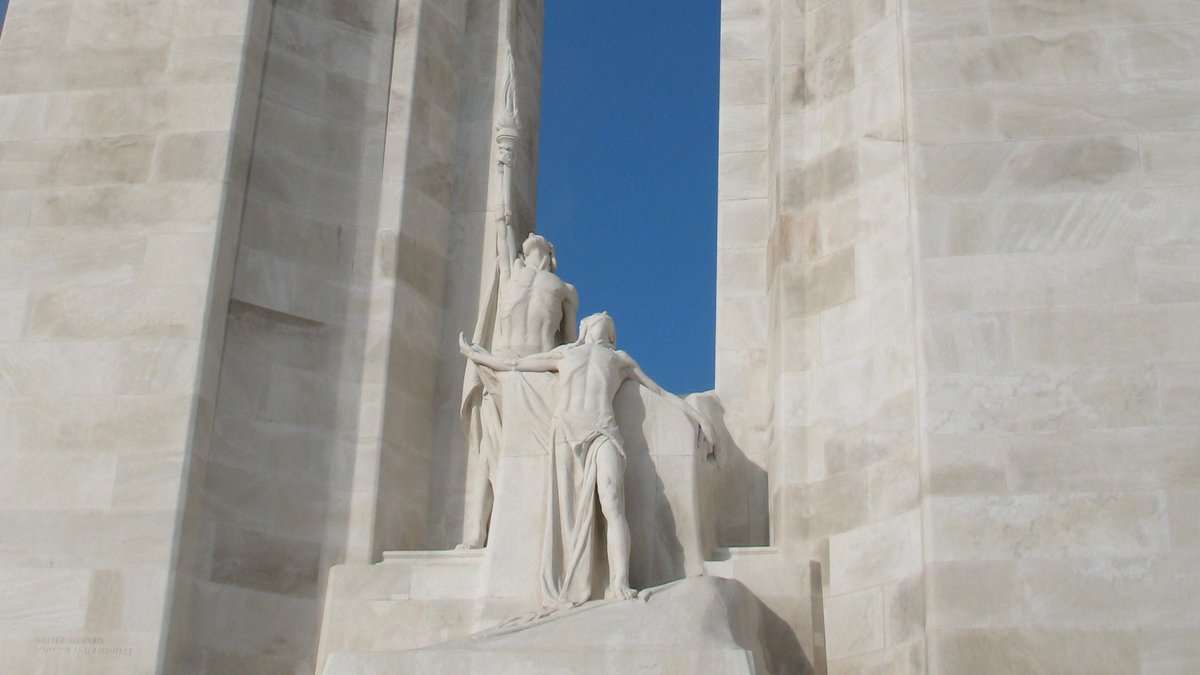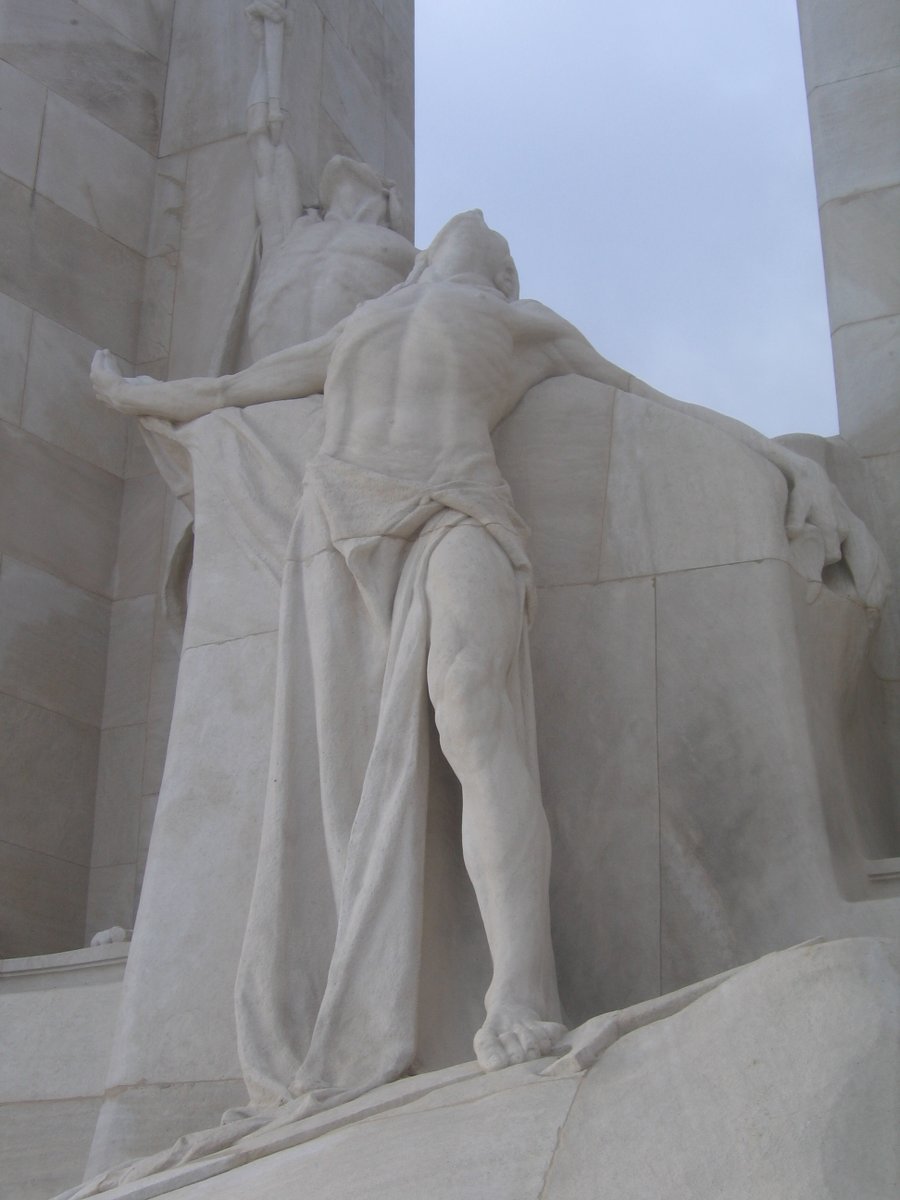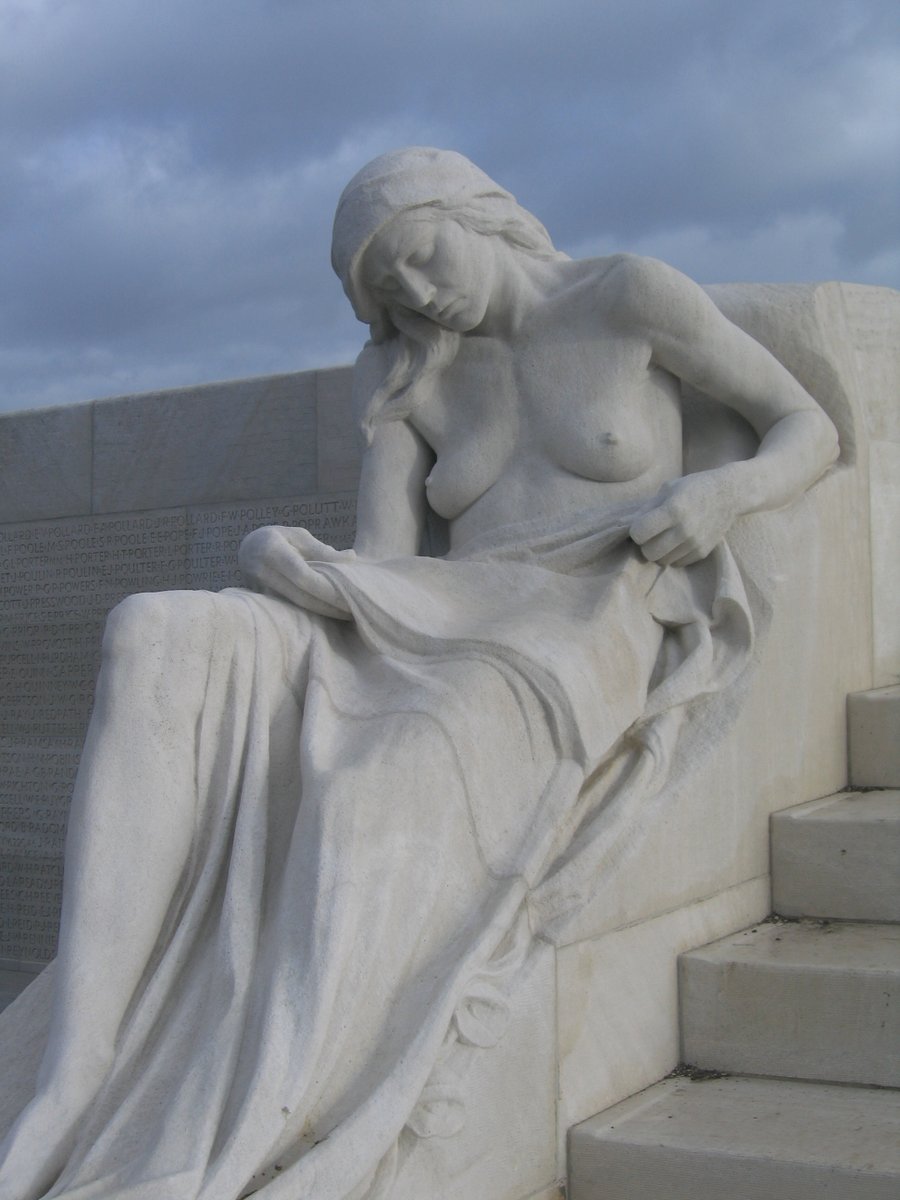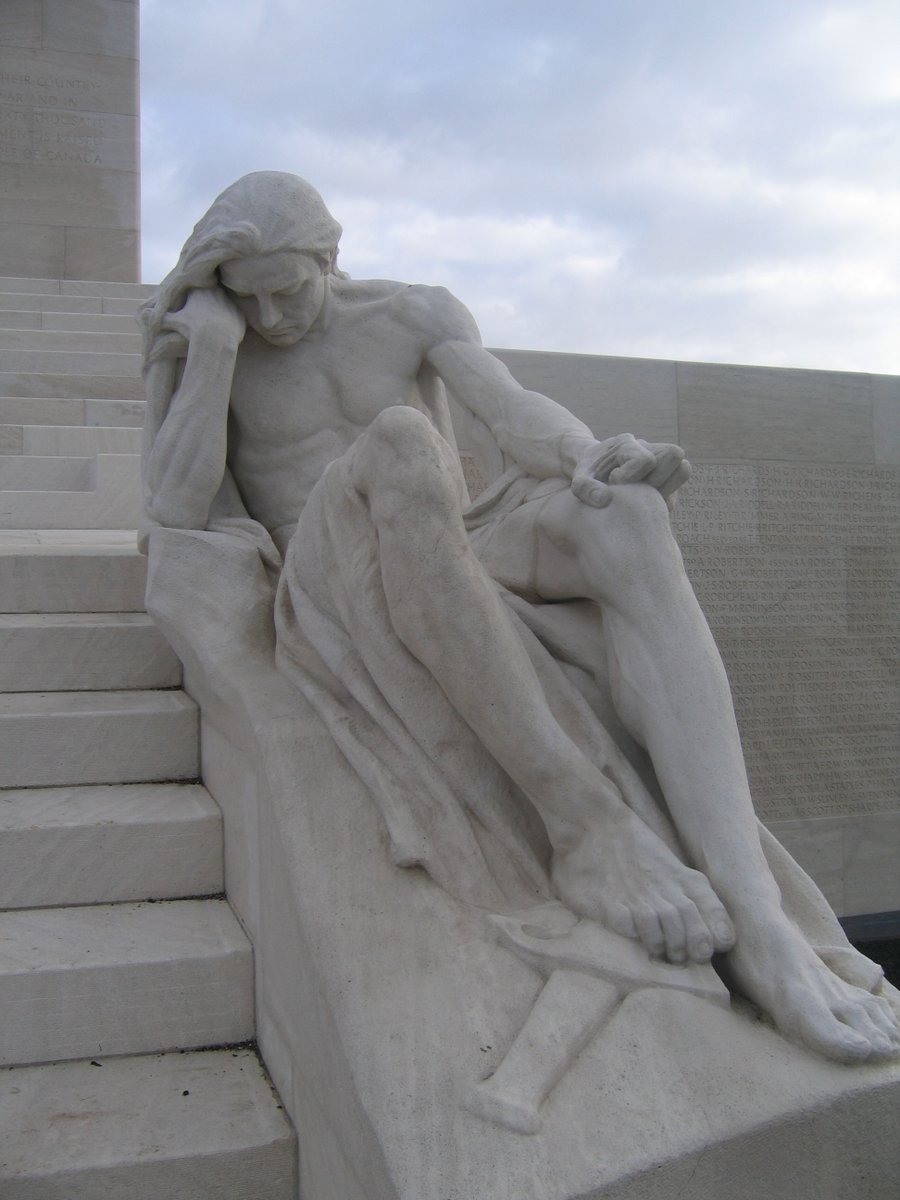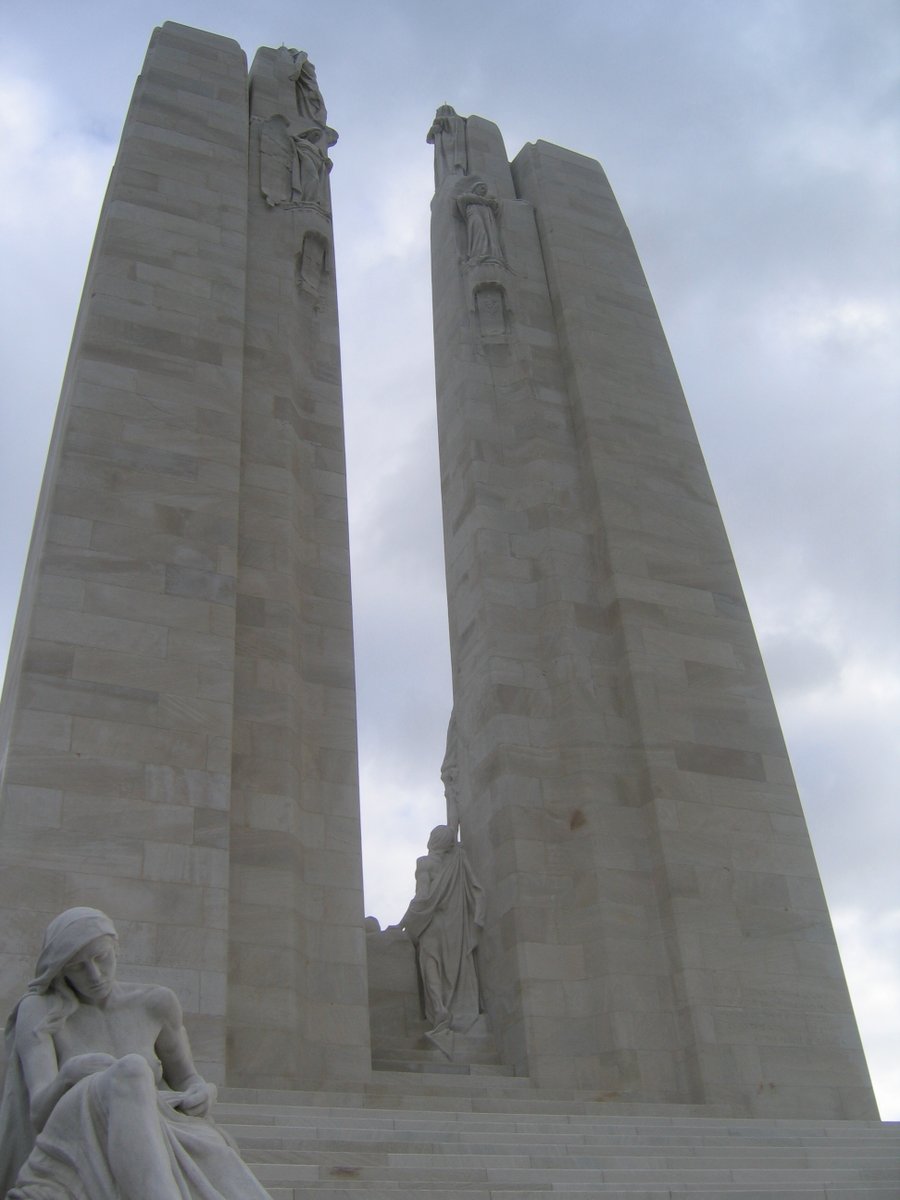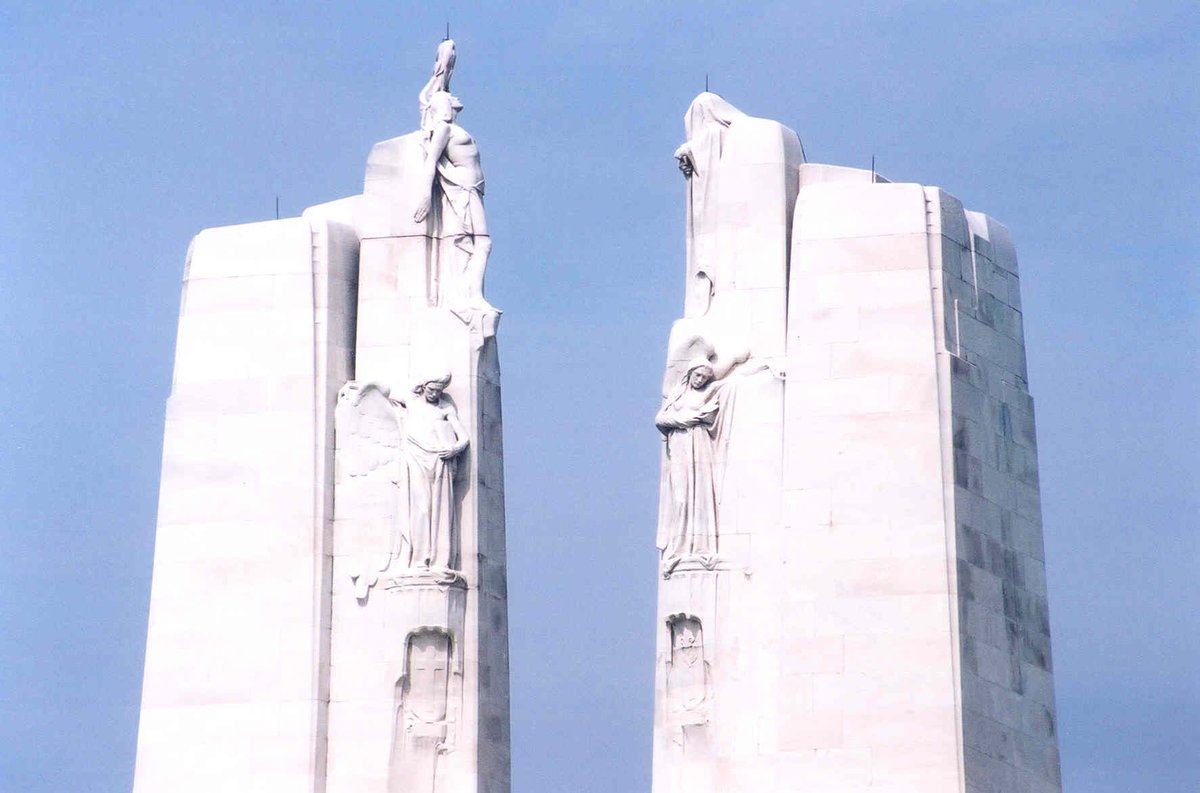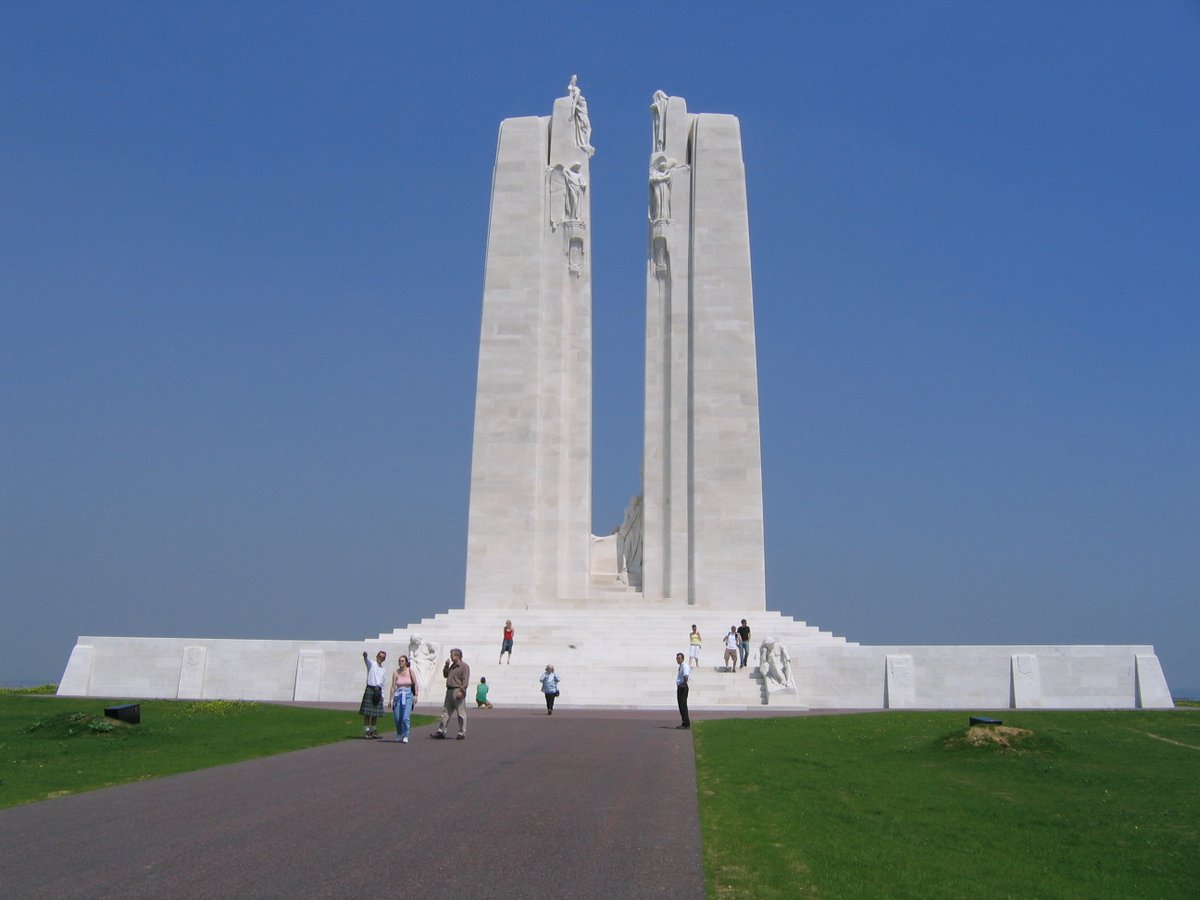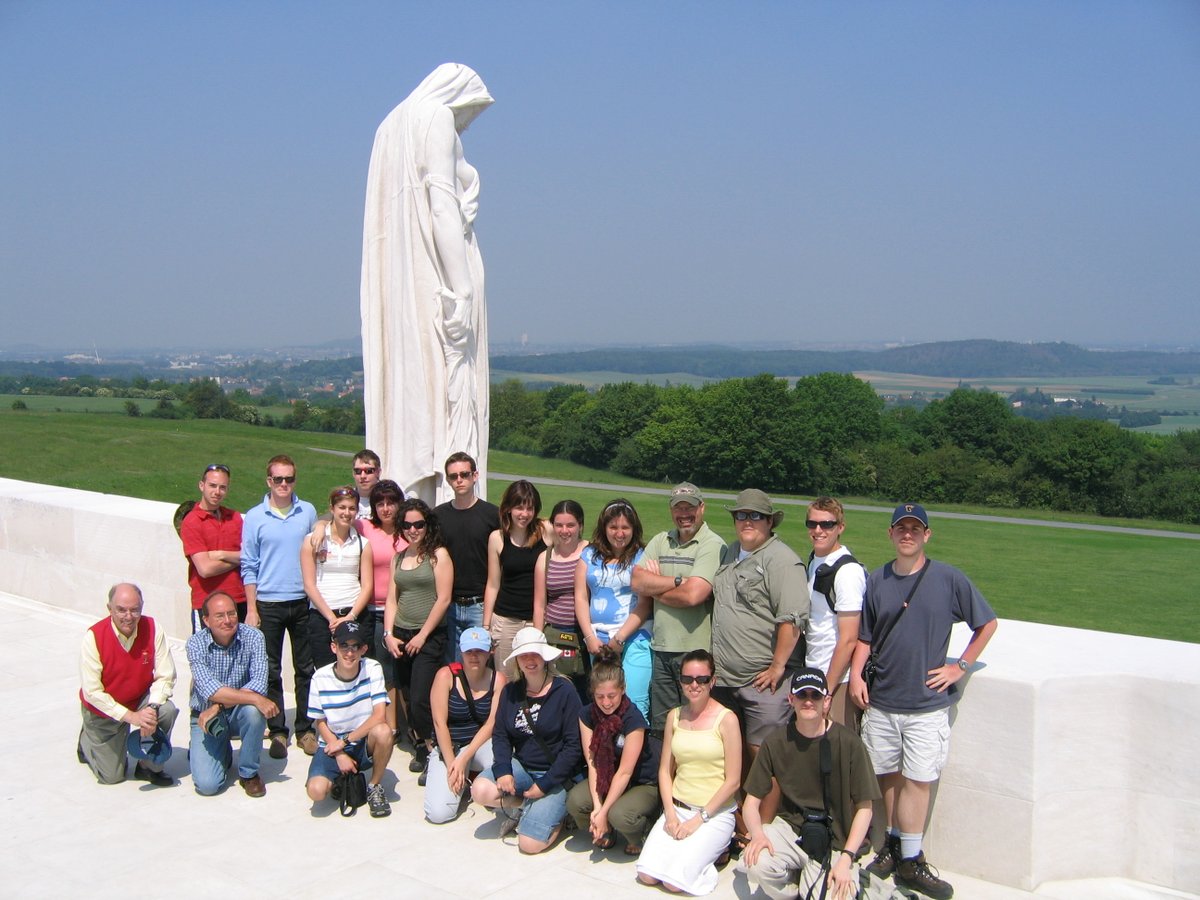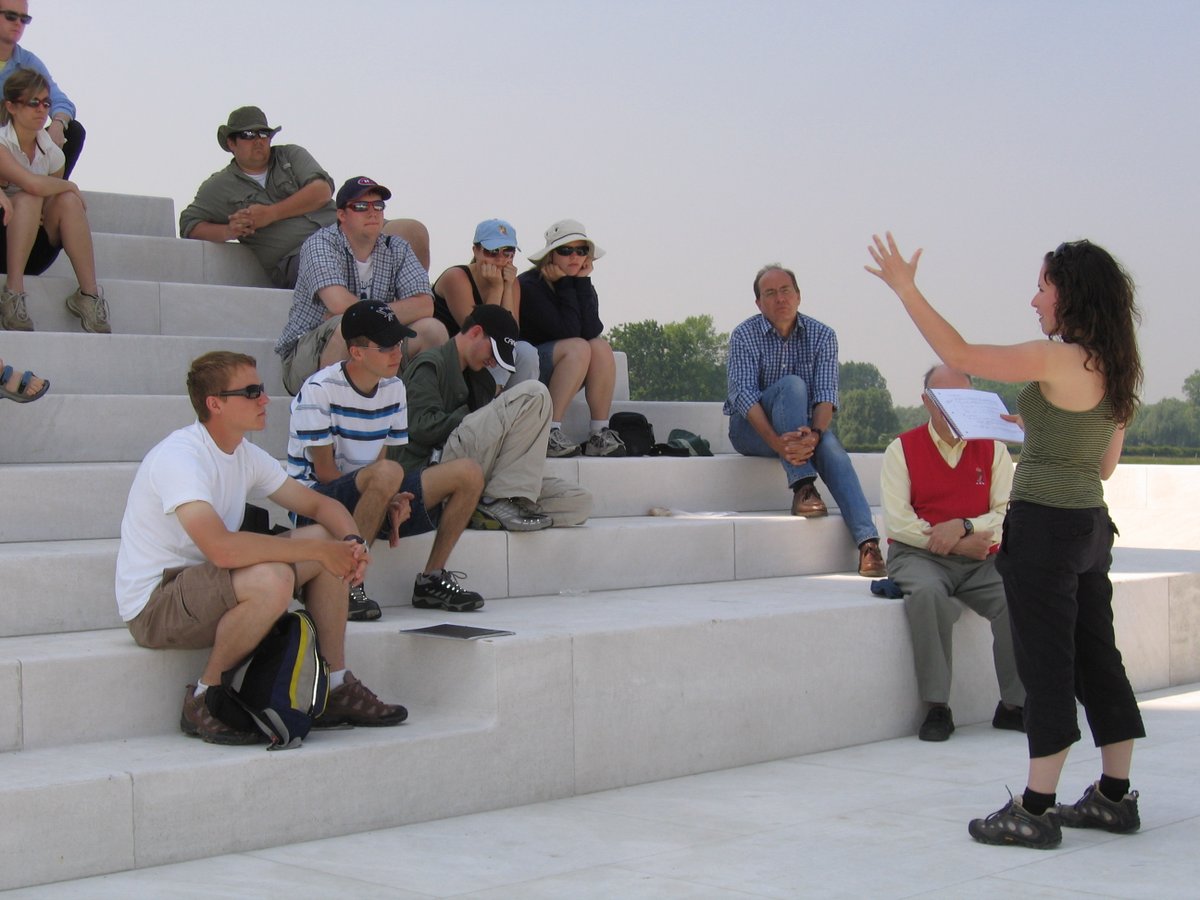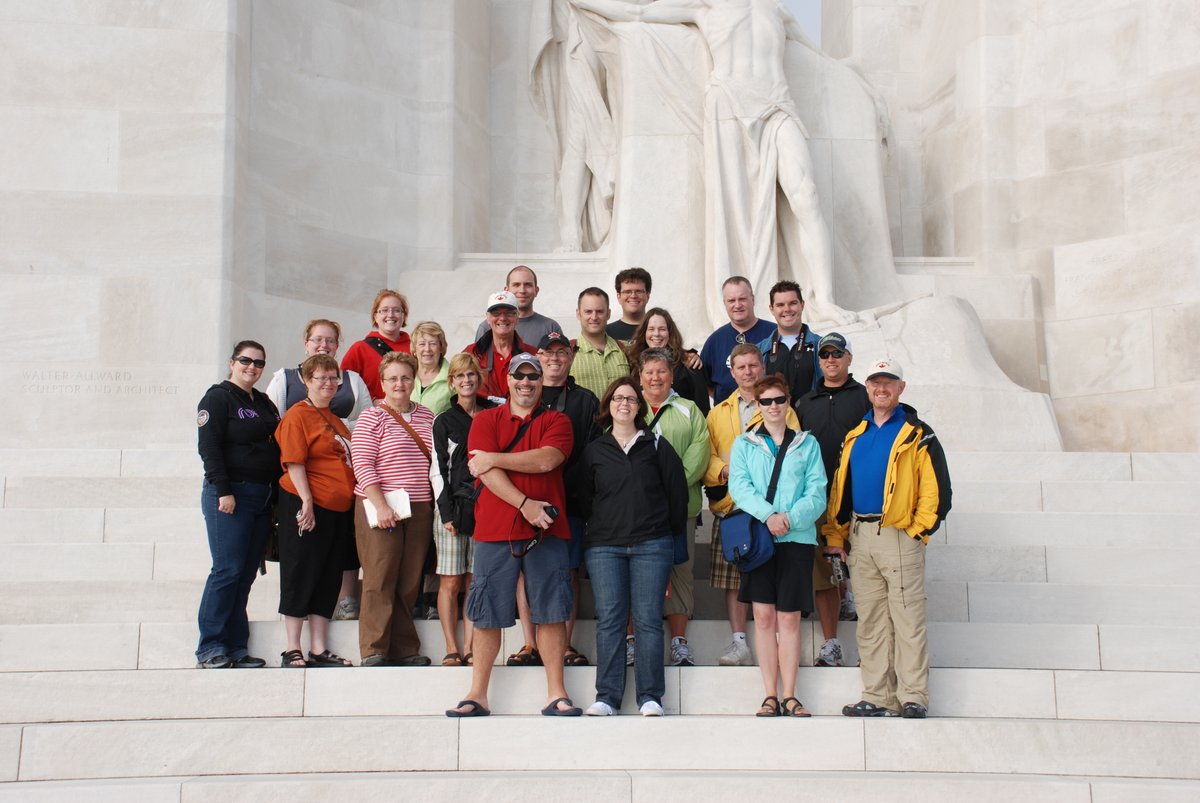While we can& #39;t visit Vimy right now, we can take a virtual tour of the Canadian National Vimy Memorial. A Thread.
#Vimy #VimyRidgeDay #WW1 #FWW
[All photos taken by me unless otherwise noted]
#Vimy #VimyRidgeDay #WW1 #FWW
[All photos taken by me unless otherwise noted]
The monument was designed by Walter Seymour Allward. His design was selected from 160 others submitted for a competition held in the early 1920s.
[LAC photos]
[LAC photos]
The Cdn govt originally wanted one design for all the battlefield memorials, but Allward& #39;s design was the clear winner and too expensive to duplicate. Only 2 other designs were used. Frederick Clemsha& #39;s Brooding Soldier at St. Julien (Ypres) and a cube design everywhere else.
Construction of the monument began in 1925 and took 11 years. It was unveiled by King Edward VII on 26 July 1936 in one of his few public engagements before he abdicated. Thousands of Canadian veterans and their families made a Pilgrimage to France for the unveiling. [LAC photos]
The monument was built atop Hill 145, the highest point on Vimy Ridge, on land given to Canada by France in 1922 in gratitude for sacrifices made by Canada in the #FWW. In their spare time, workers building the memorial also recreated the trench lines. [Photos by @disktop]
The location of the memorial offers a striking view over the Douai Plain, illustrating the tactical importance of the position. From the crest it is possible to see far into the depth of the former German positions. On the left may be seen Lens and its coal slag-heaps.
The monument was built of limestone specially sourced in Croatia. The twin pylons, representing Canada and France, soar 27 metres over the base.
Allward included much symbolism in his design. The front, which overlooks the Douai Plain, represents an unbreakable wall of defence. Note the cannons in the wall. This was particularly apt given the role of the Canadian Corps in 1918 when the Germans chose not to attack here.
There are 20 figures in Allward& #39;s design. The most prominent is the cloaked woman which her head bowed in sadness. She is known as Canada Bereft or Mother Canada. She represents the young nation of Canada mourning her dead.
Below her is the empty tomb and two sets of figures know as The Defenders: The Breaking of the Sword (left) and Sympathy of Canadians for the Helpless (right). Above each group are cannons, now silent and draped in laurel and olive branches, the symbols of Victory and Peace.
At the base of the pylons behind Mother Canada is perhaps the most important set of figures: The Spirit of Sacrifice and Passing the Torch. They represent the 65,000 Cdns killed during the war and the hope that they died to make a better world, invoking John McCrae& #39;s famous poem.
At the top of the pylons, on the front, are The Virtues (or The Chorus): Hope, Faith and Justice on the left and Charity, Honour, and Peace on the right.
As you approach the monument from what is its backside, you are greeted by two recumbent figures, The Grieving Mother and The Grieving Father who represent the grief carried by parents and others who lost loved ones during the war.
At the top of the pylons behind the Grieving Parents are The Angels: Knowledge on the left and Truth on the right.

 Read on Twitter
Read on Twitter![While we can& #39;t visit Vimy right now, we can take a virtual tour of the Canadian National Vimy Memorial. A Thread. #Vimy #VimyRidgeDay #WW1 #FWW [All photos taken by me unless otherwise noted] While we can& #39;t visit Vimy right now, we can take a virtual tour of the Canadian National Vimy Memorial. A Thread. #Vimy #VimyRidgeDay #WW1 #FWW [All photos taken by me unless otherwise noted]](https://pbs.twimg.com/media/EVQa68TUYAUhm0V.jpg)
![The monument was designed by Walter Seymour Allward. His design was selected from 160 others submitted for a competition held in the early 1920s. [LAC photos] The monument was designed by Walter Seymour Allward. His design was selected from 160 others submitted for a competition held in the early 1920s. [LAC photos]](https://pbs.twimg.com/media/EVQcTrNWoAAdHlT.jpg)
![The monument was designed by Walter Seymour Allward. His design was selected from 160 others submitted for a competition held in the early 1920s. [LAC photos] The monument was designed by Walter Seymour Allward. His design was selected from 160 others submitted for a competition held in the early 1920s. [LAC photos]](https://pbs.twimg.com/media/EVQcXbEU8AAYIk2.jpg)
![The monument was designed by Walter Seymour Allward. His design was selected from 160 others submitted for a competition held in the early 1920s. [LAC photos] The monument was designed by Walter Seymour Allward. His design was selected from 160 others submitted for a competition held in the early 1920s. [LAC photos]](https://pbs.twimg.com/media/EVQcYHEXkAEVAx4.jpg)
![The monument was designed by Walter Seymour Allward. His design was selected from 160 others submitted for a competition held in the early 1920s. [LAC photos] The monument was designed by Walter Seymour Allward. His design was selected from 160 others submitted for a competition held in the early 1920s. [LAC photos]](https://pbs.twimg.com/media/EVQcYw1U8AYIeab.jpg)
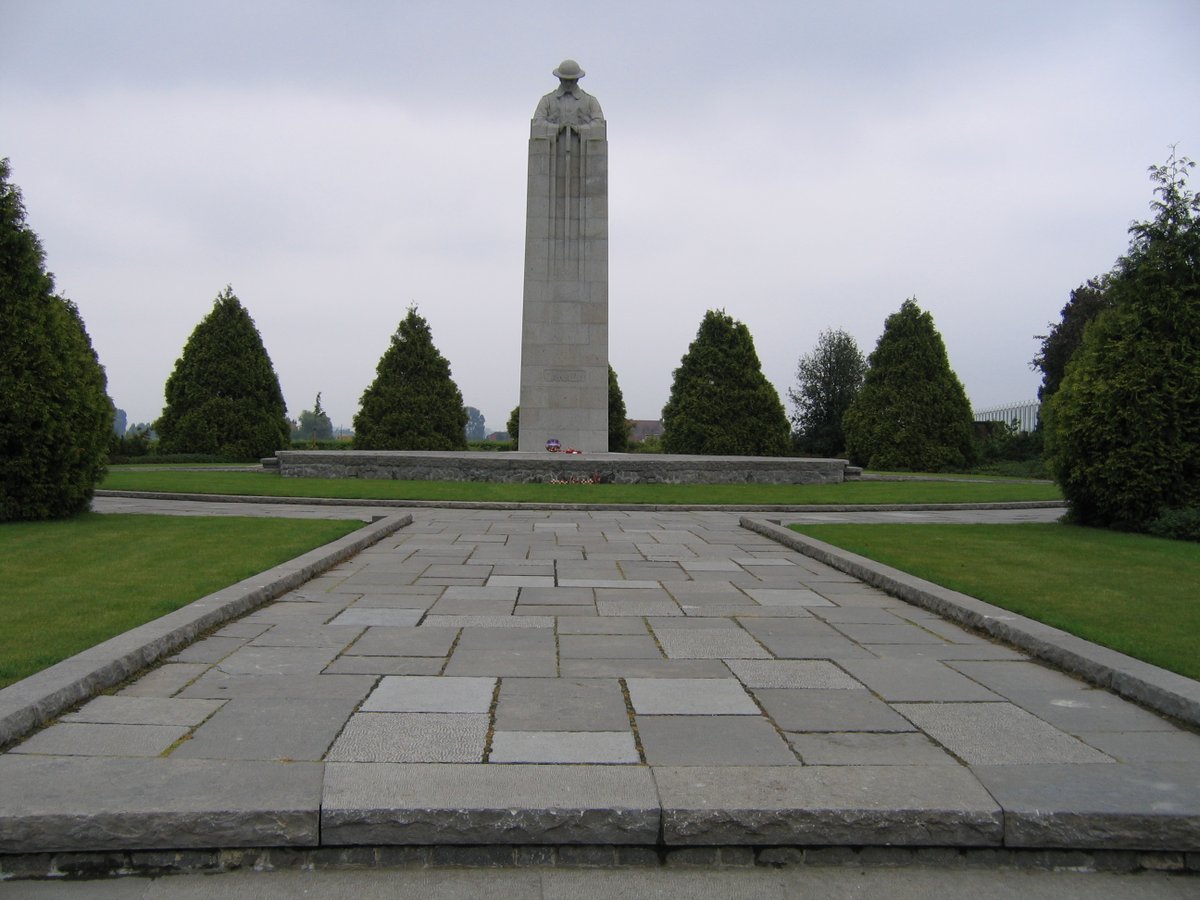

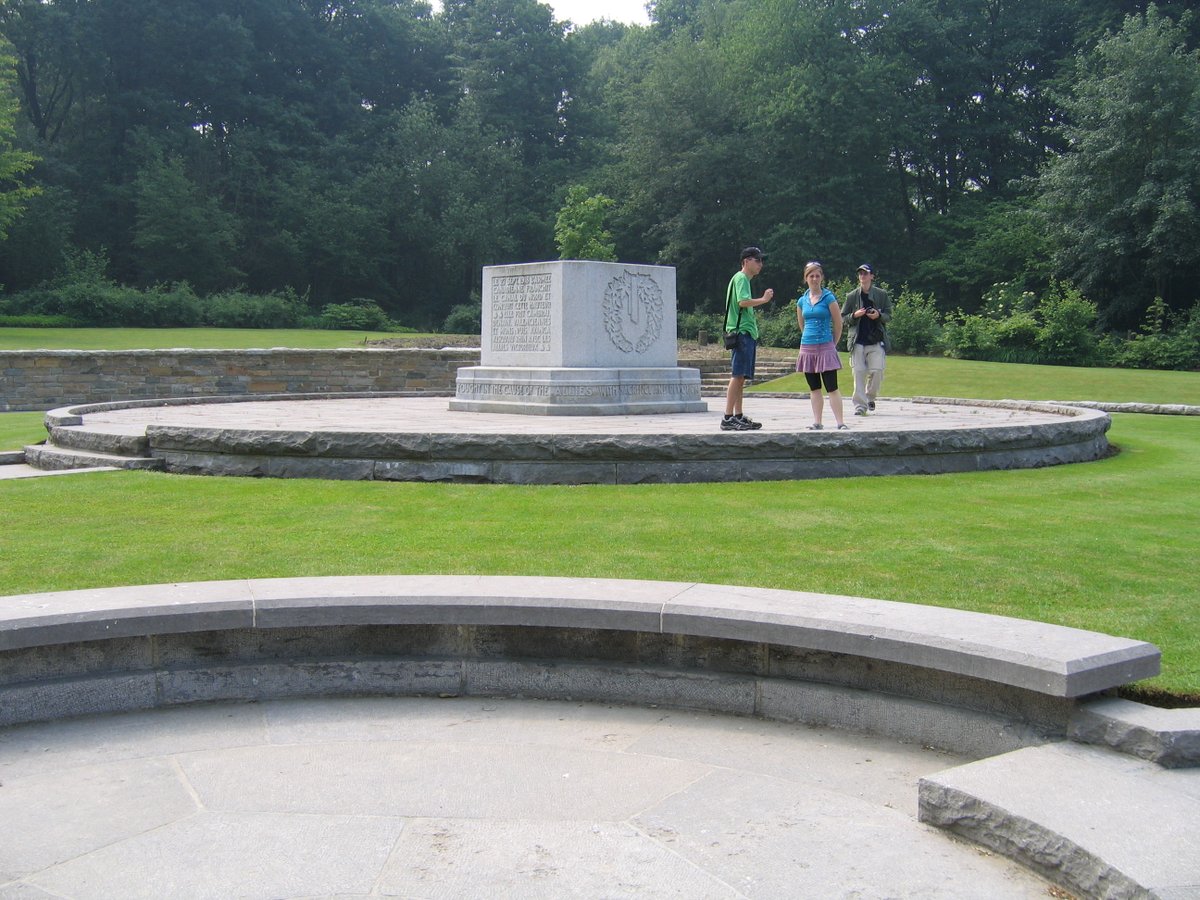
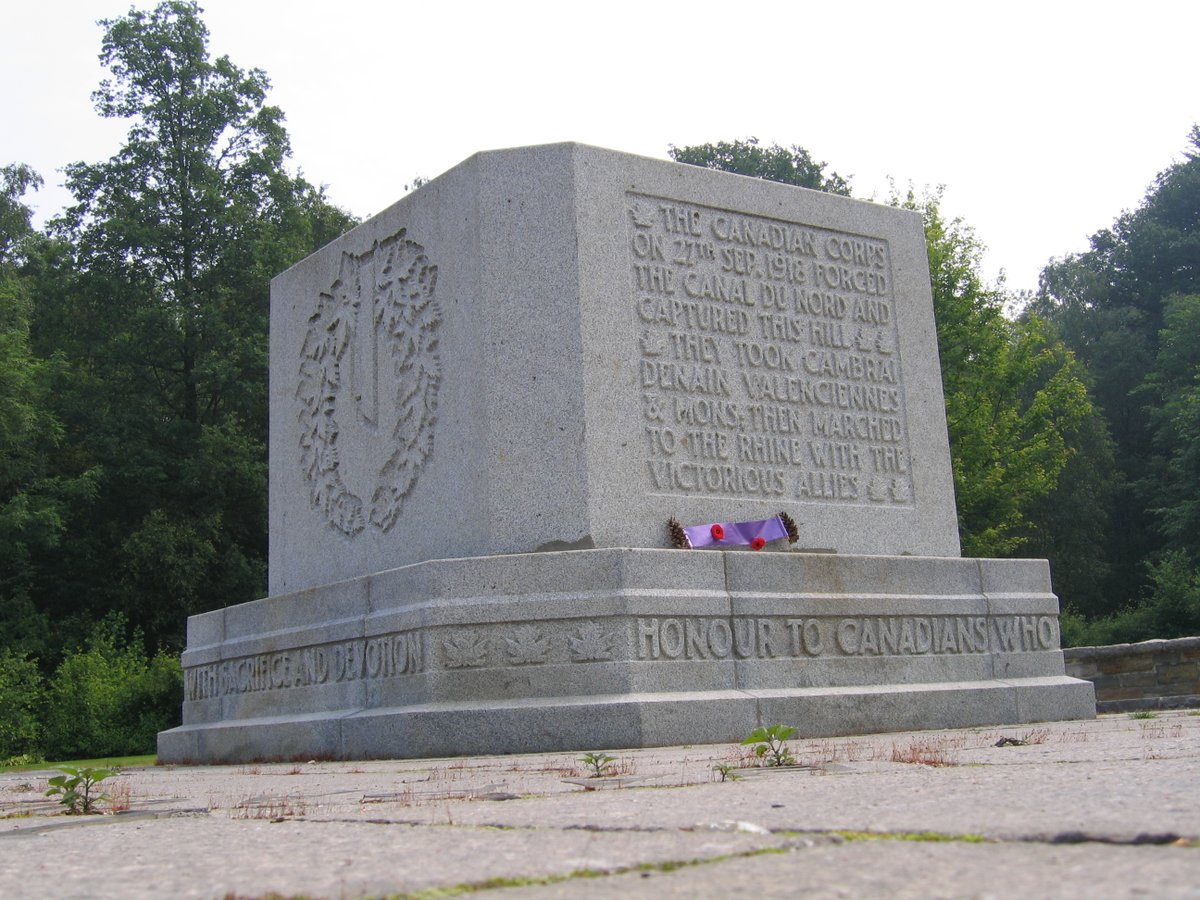
![Construction of the monument began in 1925 and took 11 years. It was unveiled by King Edward VII on 26 July 1936 in one of his few public engagements before he abdicated. Thousands of Canadian veterans and their families made a Pilgrimage to France for the unveiling. [LAC photos] Construction of the monument began in 1925 and took 11 years. It was unveiled by King Edward VII on 26 July 1936 in one of his few public engagements before he abdicated. Thousands of Canadian veterans and their families made a Pilgrimage to France for the unveiling. [LAC photos]](https://pbs.twimg.com/media/EVQgJb5XYAE0nxP.jpg)
![Construction of the monument began in 1925 and took 11 years. It was unveiled by King Edward VII on 26 July 1936 in one of his few public engagements before he abdicated. Thousands of Canadian veterans and their families made a Pilgrimage to France for the unveiling. [LAC photos] Construction of the monument began in 1925 and took 11 years. It was unveiled by King Edward VII on 26 July 1936 in one of his few public engagements before he abdicated. Thousands of Canadian veterans and their families made a Pilgrimage to France for the unveiling. [LAC photos]](https://pbs.twimg.com/media/EVQgMKuXYAITkHj.jpg)
![Construction of the monument began in 1925 and took 11 years. It was unveiled by King Edward VII on 26 July 1936 in one of his few public engagements before he abdicated. Thousands of Canadian veterans and their families made a Pilgrimage to France for the unveiling. [LAC photos] Construction of the monument began in 1925 and took 11 years. It was unveiled by King Edward VII on 26 July 1936 in one of his few public engagements before he abdicated. Thousands of Canadian veterans and their families made a Pilgrimage to France for the unveiling. [LAC photos]](https://pbs.twimg.com/media/EVQgSsKX0AIO2CC.jpg)
![Construction of the monument began in 1925 and took 11 years. It was unveiled by King Edward VII on 26 July 1936 in one of his few public engagements before he abdicated. Thousands of Canadian veterans and their families made a Pilgrimage to France for the unveiling. [LAC photos] Construction of the monument began in 1925 and took 11 years. It was unveiled by King Edward VII on 26 July 1936 in one of his few public engagements before he abdicated. Thousands of Canadian veterans and their families made a Pilgrimage to France for the unveiling. [LAC photos]](https://pbs.twimg.com/media/EVQgTzXWkAMqTXr.jpg)
![The monument was built atop Hill 145, the highest point on Vimy Ridge, on land given to Canada by France in 1922 in gratitude for sacrifices made by Canada in the #FWW. In their spare time, workers building the memorial also recreated the trench lines. [Photos by @disktop] The monument was built atop Hill 145, the highest point on Vimy Ridge, on land given to Canada by France in 1922 in gratitude for sacrifices made by Canada in the #FWW. In their spare time, workers building the memorial also recreated the trench lines. [Photos by @disktop]](https://pbs.twimg.com/media/EVQhX_jXgAAC4pq.jpg)
![The monument was built atop Hill 145, the highest point on Vimy Ridge, on land given to Canada by France in 1922 in gratitude for sacrifices made by Canada in the #FWW. In their spare time, workers building the memorial also recreated the trench lines. [Photos by @disktop] The monument was built atop Hill 145, the highest point on Vimy Ridge, on land given to Canada by France in 1922 in gratitude for sacrifices made by Canada in the #FWW. In their spare time, workers building the memorial also recreated the trench lines. [Photos by @disktop]](https://pbs.twimg.com/media/EVQhYz0XkAAIkEC.jpg)
![The monument was built atop Hill 145, the highest point on Vimy Ridge, on land given to Canada by France in 1922 in gratitude for sacrifices made by Canada in the #FWW. In their spare time, workers building the memorial also recreated the trench lines. [Photos by @disktop] The monument was built atop Hill 145, the highest point on Vimy Ridge, on land given to Canada by France in 1922 in gratitude for sacrifices made by Canada in the #FWW. In their spare time, workers building the memorial also recreated the trench lines. [Photos by @disktop]](https://pbs.twimg.com/media/EVQhZnWWkAE9BaW.jpg)
